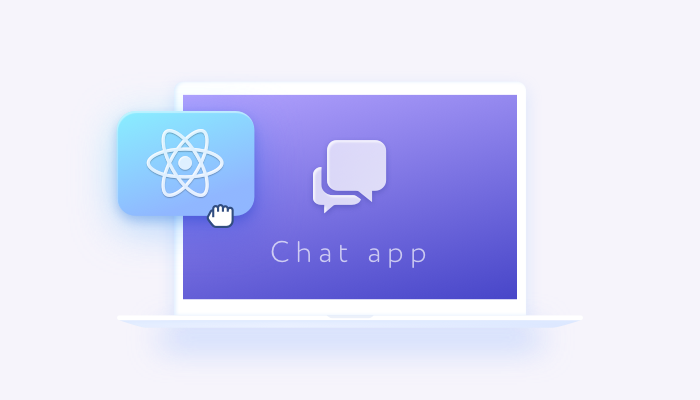
Since its first release in 2015, React Native has made the mobile development community rethink the approach to choosing the app development model. Until then, native development, where a separate app was created for each mobile platform was the go-to solution.
Indeed, native mobile applications have proved to be the most optimal in terms of performance and user experience. However, the cost of building a native mobile app was getting higher, as this approach required a team of app developers for each platform as well as the knowledge of specific languages – Kotlin or Java for Android and Swift or Objective-C for iOS.
While the market was evaluating the options of cross-platform app development, the team behind React Native – Facebook, by the way – was not idle. The tool has enhanced and fine-tuned its feature set and became a framework for developing apps that produce near-native experience and run equally smoothly on both iOS and Android. What’s more, React Native requires knowledge of only one language, JavaScript, which is the most popular language among software developers.
Why build a chat app with React Native?
If you are building a chat app, you need to build it for mobile devices, too. Mobile messaging apps are becoming increasingly popular with the user number now exceeding 3 billion, so, in order not to miss a great chunk of your target audience, you should focus on mobile platforms.
This is where React Native can become the perfect tool. This framework allows building great mobile apps with a short time-to-market at a lower development cost and gives other competitive advantages.
- Shorter development time
With React Native, a cross-platform app development tool, you can create the same code for both Android and iOS. As opposed to native app development, the cross-platform approach allows engaging only one team of developers and UI designers instead of separate teams of native developers for Android and iOS. As a result, with React Native, the development process accelerates with the finished product ready in a shorter time. In addition, a single team ensures smoother communication and coordination, which also improves the end result.
From the technology point of view, React Native is designed for quick development, too. Its Hot Reload feature allows modifying the code while the application is running and seeing the results immediately. This method can save considerable time during chat application development.
- Reusable components
React Native allows building UI with reusable components – buttons, sliders, widgets, etc. Such components can be reused over and over again with no need to create additional code.
With components, development becomes faster and more consistent, as the same piece of code is inserted wherever needed. React Native comes with quite a number of ready-made components, plus you can find multiple component libraries in developer communities.
- Native-like performance
While React Native is not exactly “native” in the pure sense of the term, the look-and-feel of apps built with this framework is as close to native as it can possibly get. React Native supports smooth integration with native components resulting in a top-quality native-like performance and great user experiences.
This is achieved due to the JavaScript functionality running in a separate thread that passes the business logic of the app.
- Over-the-Air update
Another useful feature of React Native is Over-the-Air (OTA) update allowing to push JavaScript code bundles directly to users’ mobile devices bypassing the AppStore and Google Play. The standard update procedure is to have app updates approved by the app stores before they can be released to users.
However, a standard procedure is rather time-consuming, which can be a disadvantage if you need to send out an update fixing a critical bug. OTA updates can do such fixes much quicker.
The caveat here, though, is that the OTA update feature cannot be used for large updates that still need to go through the app stores.
- Modular architecture
React Native supports modular app architecture which streamlines updates and makes development more intuitive and flexible. At the same time, the modular structure makes app testing easier, too, due to a rather straightforward process of testing scenario creation.
In addition, modular app architecture enables smoother migration of a React Native app to a truly native framework, if needed. In this case, app building does not start from scratch but uses the source code exported from the React Native application. After exporting the React Native app, you can continue with native code.
- Large developer community
Being an open-source tool, React Native benefits from code contributions from its enormous developer community. The community effort causes React Native to evolve quickly with multiple new features added all the time.
With such a large community, any bugs are detected and fixed quickly ensuring the great performance of the framework. Besides, any member can find peer support if they run into any issues with setting up or using the React Native environment.
Building a Chat App with React Native
Alongside the rise of React Native as a versatile computing language to build high-performance cross-platform apps, chat messaging has become an increasingly popular feature included in many applications. Combining React Native language with chat functionality creates a compelling app experience. If you want to add chat to your React Native app, then consider using a chat SDK built for React Native. This ready-to-use software kit allows your developer to maintain complete control of your front end and user experience while accessing rich real-time communication functionality.
Check out the React Native SDK by QuickBlox
QuickBlox offers a ready-to-use React Native SDK that allows you to build chat and calling apps or to integrate these features into an existing React Native app, all with minimum effort. QuickBlox SDKs save time that you can use to focus on your core app development process and have it market-ready much quicker. See our documentation to learn more or download our code samples to get started today.
Contact us for a free one-to-one consultation.








